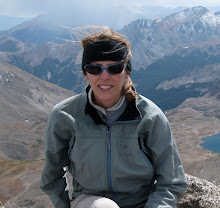Climbing mountains is not a risk-free activity. Just this past weekend, a climber from Colorado Springs was killed on Capitol Peak, a 14er near Aspen.
Tragic accidents like these happen every year. You can sift through an extensive history of Colorado mountaineering accidents on listsofjohn.
If you’re going to climb, you must be willing to accept some level of risk. But that doesn’t mean you shouldn’t take every possible precaution to keep yourself safe.
I can’t cover every aspect of mountaineering safety in one post. Instead, I’ll cover some of the main hazards, give a few tips on how to avoid them, and point you to more extensive resources.
Avalanches – Snow can remain on the high peaks well into June, with some areas holding snow year-round. Avalanche danger is always a risk, particularly in spring and early summer.
Some tips:
- Add the Colorado Avalanche Information Center (CAIC) to your bookmarks. The site provides backcountry avalanche condition forecasts, updated twice daily.
- Take an avalanche awareness course. Most REI stores offer several class throughout the year. Find one near you on REI's online store locator and click on Classes, Events and Presentations for a schedule.
- If you venture out in winter or spring, carry avalanche gear: beacon, shovel and probe. (Note that this equipment is useless unless your partner has the same gear.)
Getting Lost – The easier fourteeners have well-defined trails, and you’ll have plenty of people to follow if you’re hiking on a summer weekend. But many of the harder peaks require good route-finding skills.
Some tips:
- Always carry a map and compass (and know how to use them). A GPS can be helpful, but isn’t a replacement for map-and-compass orienteering.
- In case you do get lost and are forced to spend a night out, carry emergency food, matches and extra clothing. A lightweight bivy sack like this one is also a good idea.
Rock Fall – Many of the more difficult fourteeners have loose rock. Not only do you want to avoid being hit, you also need to avoid sending rocks down on climbers below you.
Some tips:
- Wear a helmet.
- Climb routes that are known for rock-fall during the week.
Lightning – Refer to my July 8 post on The Art of the Alpine Start.
I’ve already recommended Freedom of the Hills, but I’ll plug it again here as a must-have resource. Reading this book will give you the knowledge you need to travel safely in the mountains, but remember that there’s no substitute for actual experience.

0 comments:
Post a Comment